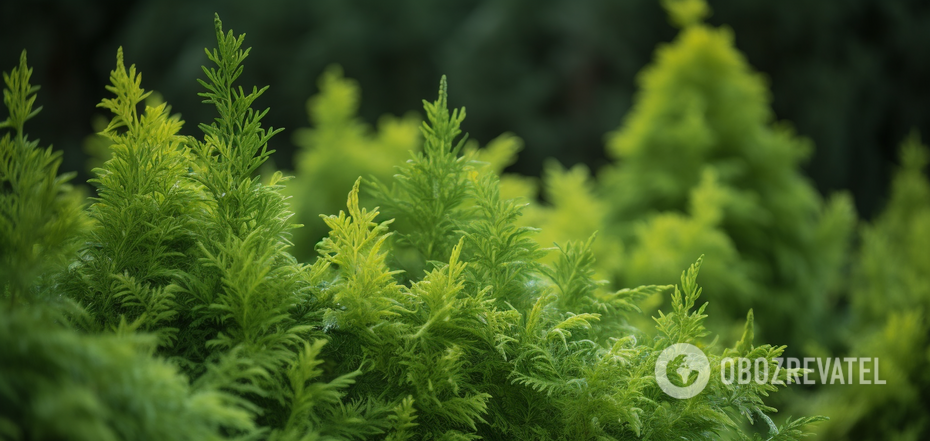Life
How to grow beautiful thuja: tips for summer and autumn fertilisation
The popularity of thuja trees in the garden is due to the fact that they adapt well to our climate, grow quite quickly and produce a large evergreen mass that can be used in many different ways. For example, as an opaque but beautiful hedge.
But it still needs proper care. Without it, they can start to turn yellow, turn brown and dry out. OBOZREVATEL looked into how to properly care for this plant.
You can't cope without nutrition
In order for the thuja to grow healthy, it should be provided with an optimal dose of nutrients. This will not only stimulate it but also give it a lush, beautiful colour. It will also make the shrubs more resistant to unfavourable conditions and diseases. The main principle when fertilising is moderation. It is better to give a plant less fertiliser than to over-fertilise it.
How often should I fertilise my thuja?
The plant is rather demanding when it comes to assimilating minerals and nutrients. The optimum regularity, according to experienced growers, is three times a year:
- in March-April;
- in the first half of July;
- in autumn, at the turn of September and October.
What to fertilise thuja with? The time of year does matter
There's no one-size-fits-all fertiliser for thuja. The needs of the plant vary depending on the season.
In spring and summer fertilisers, nitrogen is essential. It allows the plant to form new shoots quickly and makes the crown more dense. It does not matter whether you use a liquid fertiliser for watering or a dry one to apply directly to the soil. But if you want to use a slow-acting fertiliser in pellet form, remember that you should only use it in spring.
For autumn treatment, it is important to provide the mulberry with potassium, magnesium and phosphorous to help it through the winter. Nitrogen at this time will make the young shoots too vulnerable to low temperatures.
Is organic fertiliser suitable for thuja?
Absolutely. Organic fertilisers are harder to overdose than readily available mineral fertilisers. In addition, they not only provide the plant with nutrients, but also with beneficial soil micro-organisms and improve the structure of the substrate, making it more finely tuned and porous to water and air.
All of this helps to strengthen the plant and make it more resistant to disease. You can therefore safely apply manure or compost under thuja once a year. Organics don't need to be applied more often.
Previously OBOZREVATEL told how to water the lawn properly, so it was lush, and not to spend too much water.
Subscribe to OBOZREVATEL channels in Telegram and Viber to keep up with the latest developments.



























